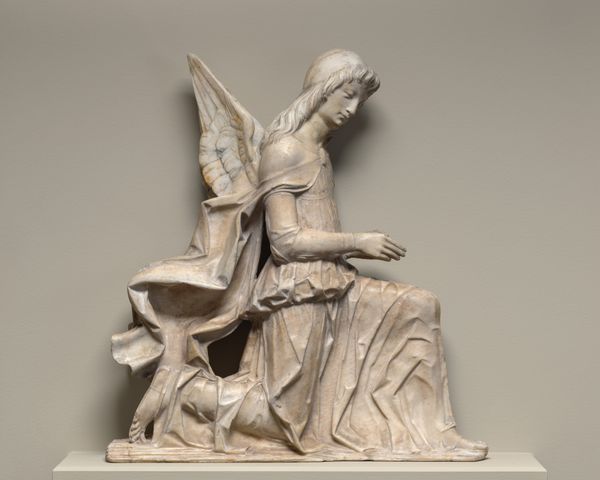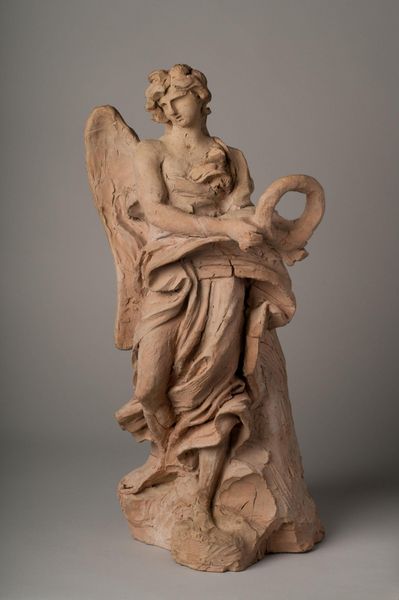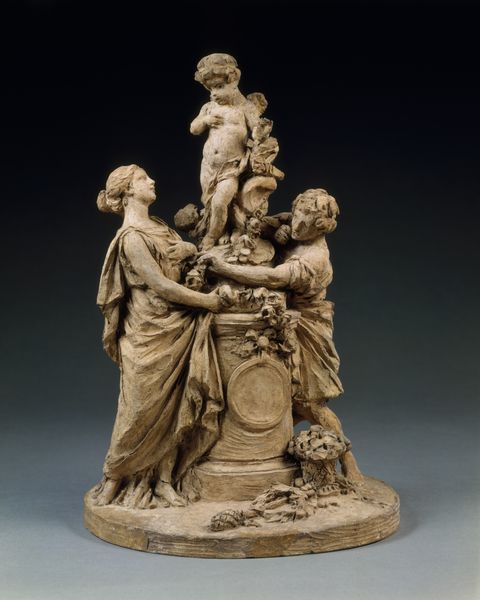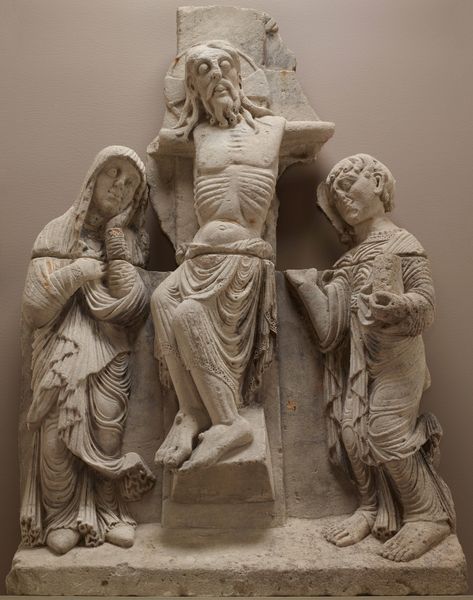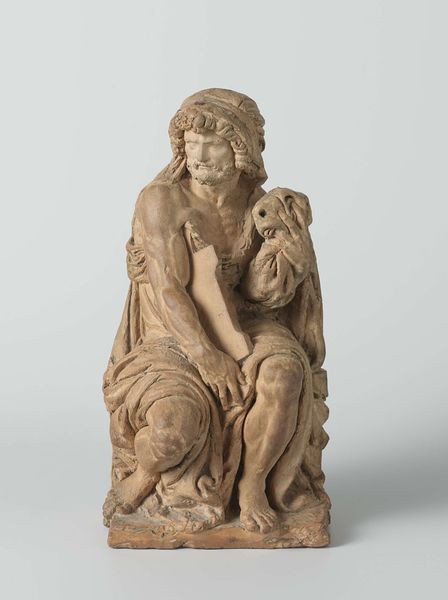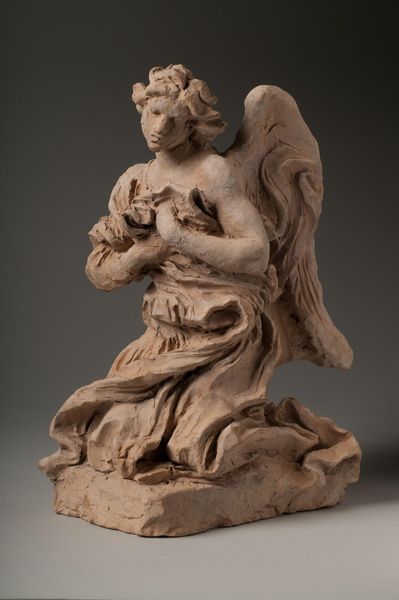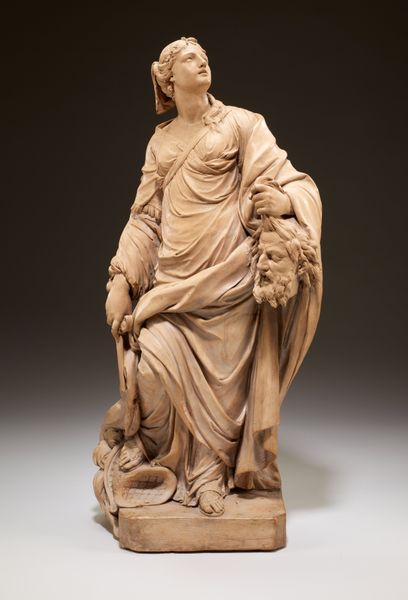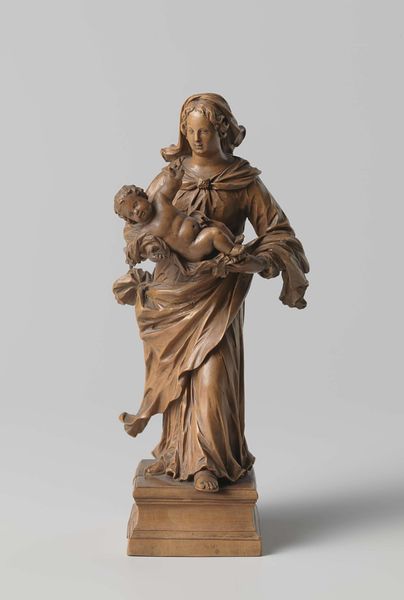
Dimensions: 18 1/4 x 6 1/4 x 6 1/4 in. (46.36 x 15.88 x 15.88 cm)
Copyright: Public Domain
Editor: Here we have an exquisite terracotta sculpture, circa 1780, entitled "Modello or sketch for porte montre (watch stand)". The artist is, sadly, unknown. The sculpture’s flowing lines and the figures strike me as quite playful. How would you interpret this work? Curator: Indeed! The playful lines you notice belong to the Rococo style, which favored asymmetry and ornate detail. More importantly, notice the symbols: the female figure, likely a personification of an ideal, holding a fowl – perhaps pointing towards domesticity and bounty. Above her, a cherubic figure reclines on a plaque. Do you see what kind of timepiece might fit into the circular void above? Editor: It looks like a pocket watch would sit perfectly in that space! So, the woman is kind of guarding or presenting the concept of time itself? Curator: Precisely. Time was becoming an increasingly precious commodity in the 18th century. The imagery around this, though – cherubs and bountiful nature – soften the notion of time into something more pleasant, less of a demanding master. Note how different this is from, say, later Victorian funereal monuments fixated on time's passage and death! Editor: That’s a fascinating contrast. The Rococo period seems more about integrating time into an idyllic life. Curator: Exactly! Consider how the terracotta material itself softens the form. It’s a model, a sketch. A final, say, gilded bronze version might give a vastly different impression. So, what emotional message do you now get from these symbols, knowing it’s about time and the decorative object’s role? Editor: I see it now as time presented as an opportunity for happiness and abundance. It is a lighter interpretation than I first perceived. Curator: And that, perhaps, is the genius of Rococo – its ability to take even something as potentially austere as time and imbue it with joy.
Comments
minneapolisinstituteofart almost 2 years ago
⋮
House clocks had been popular additions to wealthy homes since the 1500s, but portable pocket watches were a new and head-turning achievement in the 1700s. Their proud owners showcased them in precious watch stands when not in use—the 1700s equivalent of iPhone chargers. This one exhibits a relief showing the figure of Cupid with two pierced hearts and kissing birds, suggesting that when the watch was put into its stand at night, it was time for love.
Join the conversation
Join millions of artists and users on Artera today and experience the ultimate creative platform.

